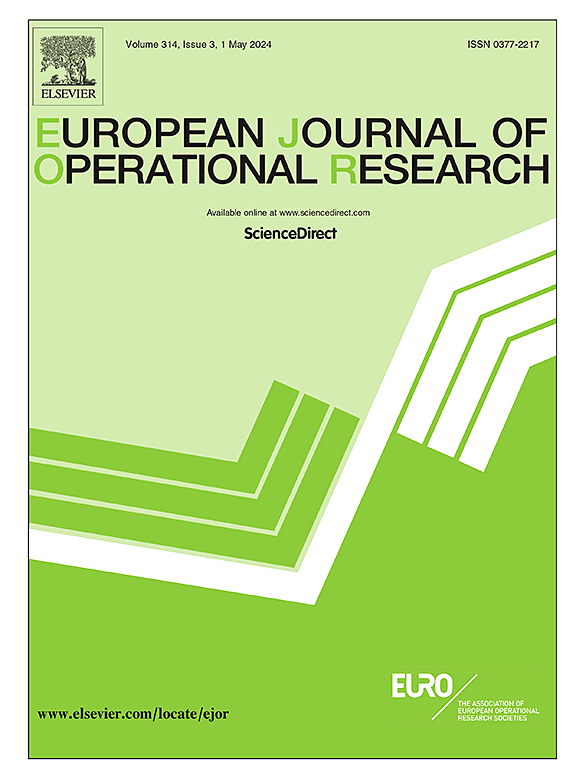Stow & pick: Optimizing combined stowing and picking tours in scattered storage warehouses
IF 6
2区 管理学
Q1 OPERATIONS RESEARCH & MANAGEMENT SCIENCE
引用次数: 0
Abstract
To streamline order fulfillment, many e-commerce retailers apply scattered storage in their picker-to-parts warehouses. Instead of putting homogeneous unit loads into racks, they break up the pallets and store individual products within mixed shelves. This increases the probability that (somewhere in the vast warehouses) products, ending up jointly on hardly predictable pick lists, can be picked from neighboring shelves. Scattered storage promises a reduction of picker travel but comes at the price of additional stowing effort. Instead of applying separate workforces, stowing and picking can also be combined. This paper provides an exact routing algorithm for a worker with a picking cart who departs from the depot with multiple bins filled with products to stow, switches to picking underway, and returns bins full of picked products to the depot. We identify nine different combined stowing and picking policies. We provide an exact solution procedure based on the branch&bound paradigm for all these policies, based on the parallel-aisle structure of warehouses. If a constant limits the number of relevant regions (i.e., picking aisle subsections between adjacent cross aisles with a storage position to be visited), this algorithm guarantees polynomial runtime. We apply our algorithm to benchmark the gains of the nine combined stowing and picking policies compared to the traditional approach, where stowing and picking are executed by separate workforces. Depending on the selected policy, average gains between 11.8 and 42.0 % arise.求助全文
约1分钟内获得全文
求助全文
来源期刊

European Journal of Operational Research
管理科学-运筹学与管理科学
CiteScore
11.90
自引率
9.40%
发文量
786
审稿时长
8.2 months
期刊介绍:
The European Journal of Operational Research (EJOR) publishes high quality, original papers that contribute to the methodology of operational research (OR) and to the practice of decision making.
 求助内容:
求助内容: 应助结果提醒方式:
应助结果提醒方式:


